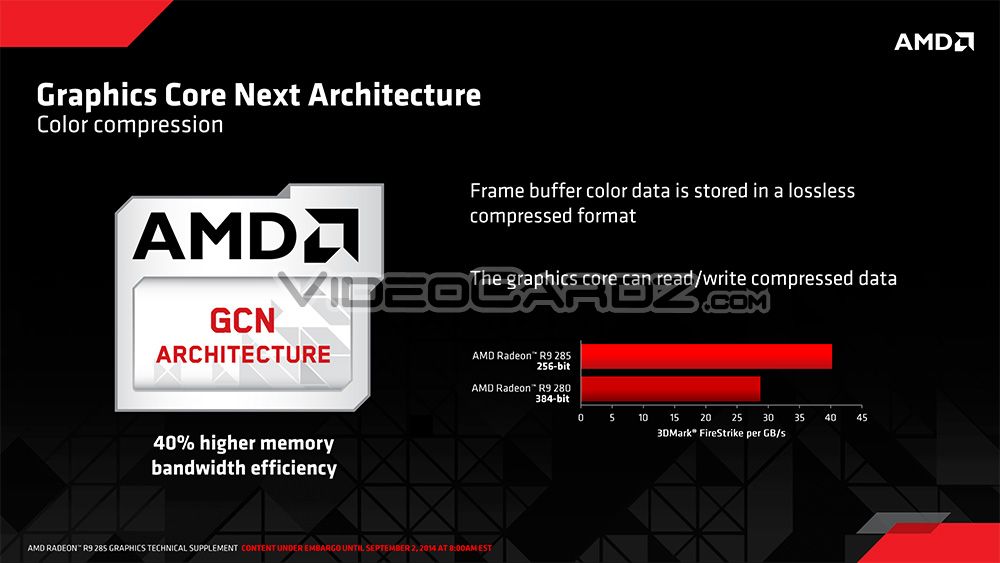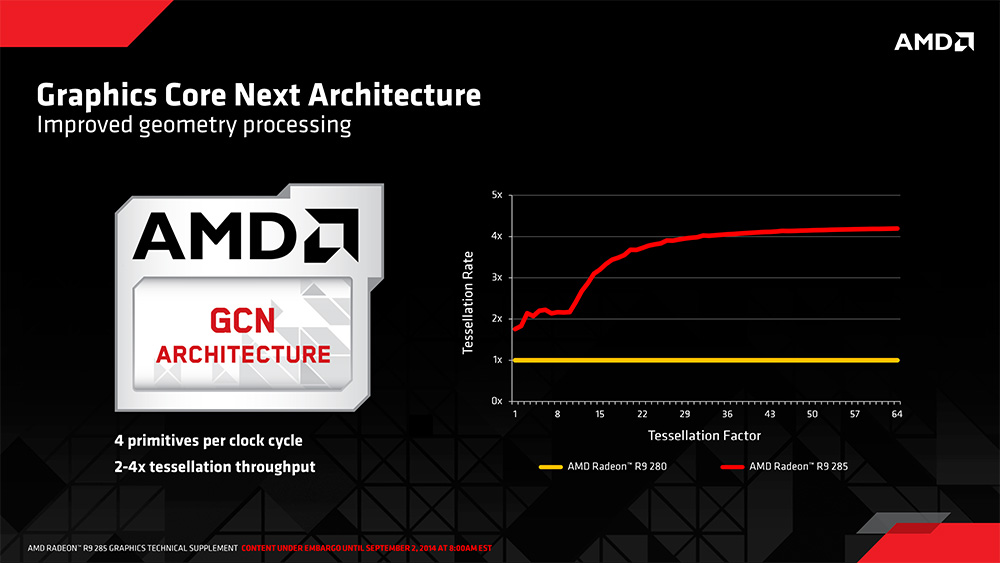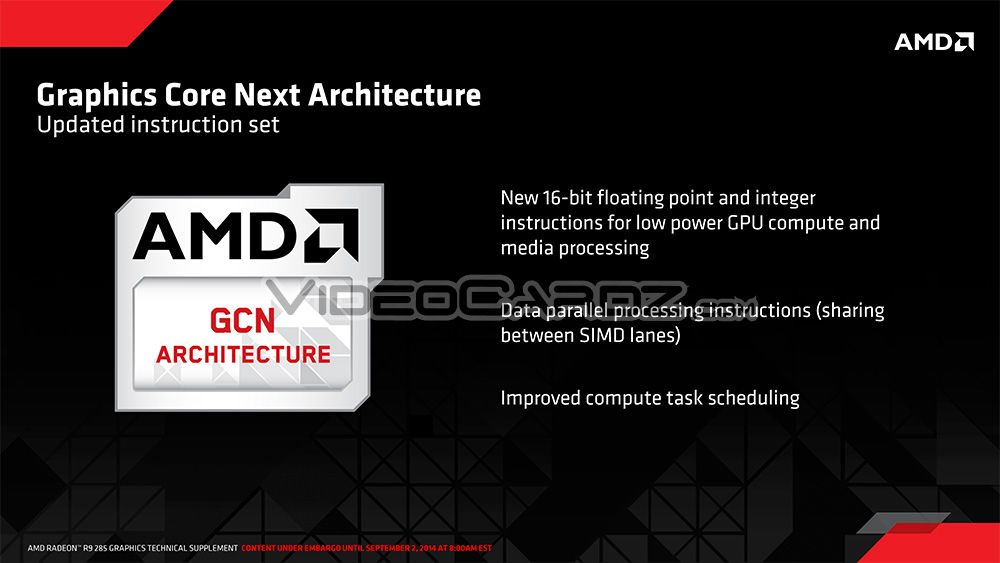Install the app
How to install the app on iOS
Follow along with the video below to see how to install our site as a web app on your home screen.
Note: This feature may not be available in some browsers.
You are using an out of date browser. It may not display this or other websites correctly.
You should upgrade or use an alternative browser.
You should upgrade or use an alternative browser.
AMD: Volcanic Islands R1100/1200 (8***/9*** series) Speculation/ Rumour Thread
This block diagram is just a rough estimate of what Tonga should look like, to help readers understand the main differences between GPUs. It's based on current knowledge. As written in the story, Tonga as at least 28 CUs but maybe a bit more which is why some CUs are lighter. Same with the L2 as it should be at least 512 KB but maybe more. Anyway some websites seem happy to use this illustration but don't care too much about its original meaning hehe
Personally I'd still hope for a bit more change, for instance like how the ROPs are connected to the L2 (or rather not connected...) though you'd not actually see that with this diagram style. If things are changing in that area I'd not be surprised if there's even more L2 cache than your 512kB-1MB suggestion.This block diagram is just a rough estimate of what Tonga should look like, to help readers understand the main differences between GPUs. It's based on current knowledge. As written in the story, Tonga as at least 28 CUs but maybe a bit more which is why some CUs are lighter. Same with the L2 as it should be at least 512 KB but maybe more. Anyway some websites seem happy to use this illustration but don't care too much about its original meaning hehe
So far Dave has maybe cryptically hinted Tonga is not quite the same as Bonaire/Hawaii but nothing concrete really and even that may just be my interpretation
I believe the objection is that the GCN 1.1 designation is an unofficial shorthand that AMD does not use.
Version numbers, code names, and branding mean little to nothing, tech sites' valiant--if futile--efforts at creating intelligibility from the morass notwithstanding.
If Tonga is different at a IP level than other GPUs, it might be some subset out of a pool/grab bag/sack of kittens/bucket of features or implementation details that any other GPU might have/have a bit of/ have a second cousin of/dated in college/once shared a cab with/whatever.
Version numbers, code names, and branding mean little to nothing, tech sites' valiant--if futile--efforts at creating intelligibility from the morass notwithstanding.
If Tonga is different at a IP level than other GPUs, it might be some subset out of a pool/grab bag/sack of kittens/bucket of features or implementation details that any other GPU might have/have a bit of/ have a second cousin of/dated in college/once shared a cab with/whatever.
At least the VCE has been upgraded since hawaii, no more 1080 limit (IIRC the old one isn't much faster than realtime either). But unfortunately no H.265 decoder support yet.
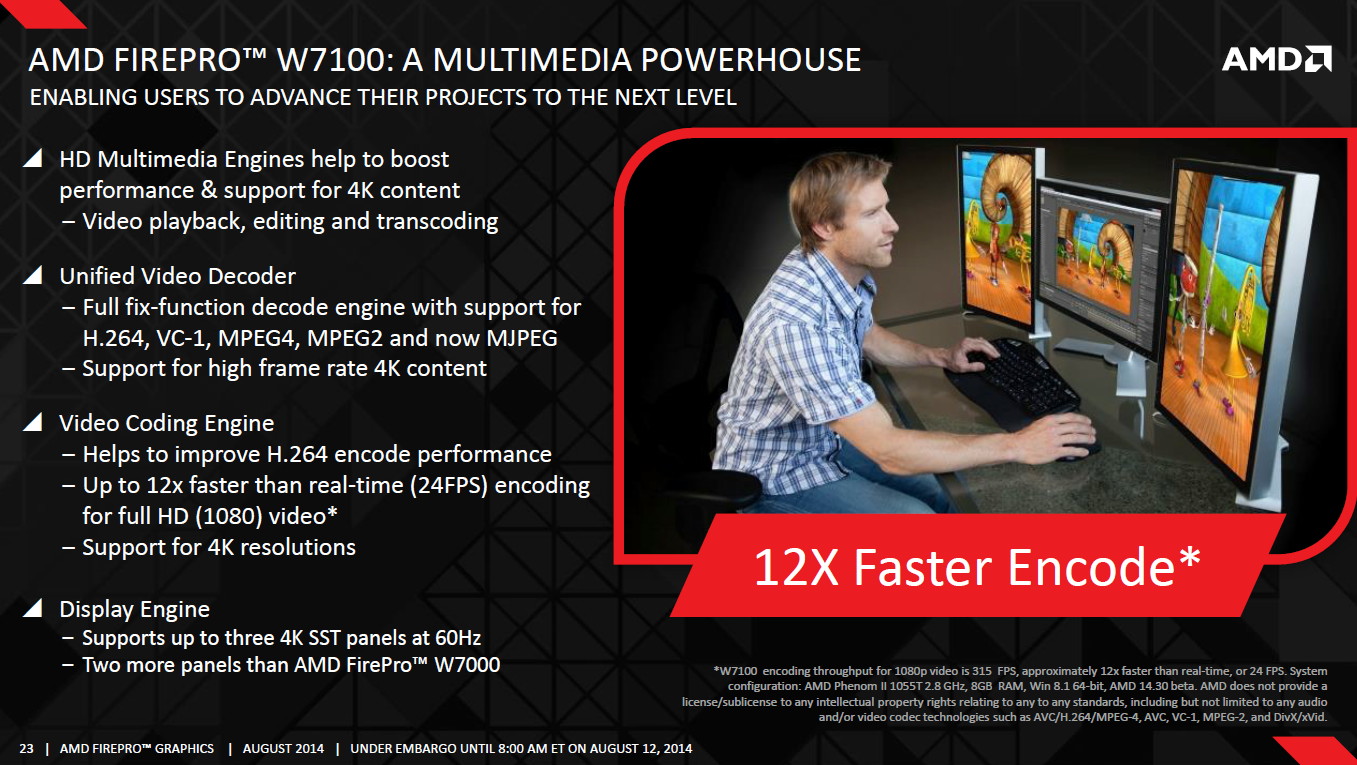 (edit: seems hardware.fr doesnt allow hotlinking: http://www.hardware.fr/medias/photos_news/00/45/IMG0045309_1.jpg)
(edit: seems hardware.fr doesnt allow hotlinking: http://www.hardware.fr/medias/photos_news/00/45/IMG0045309_1.jpg)
But the old CodeXL release is also making different shader code for volcanic islands, so it must have been upgraded there too (unless it's for chips even further out in the future)

But the old CodeXL release is also making different shader code for volcanic islands, so it must have been upgraded there too (unless it's for chips even further out in the future)
Last edited by a moderator:
So far we know from the development of AMDKFD that there is at least one new level of GPU IP with mid-wave preemption support. Given AMD's initial HSA roadmap back in 2012 was stated to have "HSA-compatible discrete GPU" and "GPU compute context switch" for 2014, there is a slim chance of Tonga to incorporate the same level of IP as Carrizo.If Tonga is different at a IP level than other GPUs, it might be some subset out of a pool/grab bag/sack of kittens/bucket of features or implementation details that any other GPU might have/have a bit of/ have a second cousin of/dated in college/once shared a cab with/whatever.
P.S. This roadmap indicates that KV comes with CI graphics and CZ comes with VI graphics, whereas it fits the speculation above if we consider also the CodeXL reveal.
Last edited by a moderator:
http://www.amd.com/en-us/press-releases/Pages/amd-to-celebrate-2014aug14.aspx
Consumer-Tonga / R9 285 release?
Consumer-Tonga / R9 285 release?
Festivities to be commemorated with special guests, never-before-heard stories and new product announcements
R9-285 supposed launch september 2nd
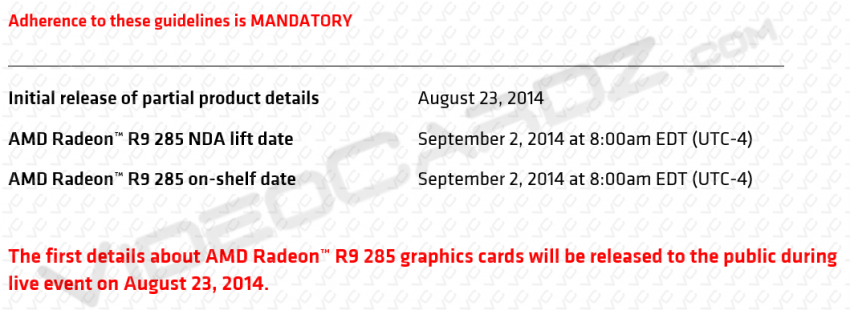
http://videocardz.com/51251/amd-radeon-r9-285-arrives-september-2nd-preliminary-information-2-days
(we really need to clean up these threads, what is considered sea, volcanic and pirate. Seems like tonga is volcanic, but hawaii is sea)

http://videocardz.com/51251/amd-radeon-r9-285-arrives-september-2nd-preliminary-information-2-days
(we really need to clean up these threads, what is considered sea, volcanic and pirate. Seems like tonga is volcanic, but hawaii is sea)
Yes. Or make the "Fantasy Islands"-thread like Dave suggested (I think it was Dave?)(we really need to clean up these threads, what is considered sea, volcanic and pirate. Seems like tonga is volcanic, but hawaii is sea)
The Tonga-based FirePro W7100 has a "maximum power consumption" of <150W:
http://www.amd.com/en-us/products/graphics/workstation/firepro-3d/7100#
This might be the TDP of the R9 285 as well, which would be a nice improvement over the 280's 250W, although I don't think the latter gets anywhere near that in practice.
http://www.amd.com/en-us/products/graphics/workstation/firepro-3d/7100#
This might be the TDP of the R9 285 as well, which would be a nice improvement over the 280's 250W, although I don't think the latter gets anywhere near that in practice.
Yes. Or make the "Fantasy Islands"-thread like Dave suggested (I think it was Dave?)
There is the marketing use of the Island families, where they put different GCN generations in.
But there is also the engineer use of Island families, as we saw with the Code XL leak.
In the end AMD should publish something similar to NVs compute capability system.
Last edited by a moderator:
Very nice! I wonder if they also improved the depth compression not to require decompression before being used as a texture? Always seemed like a weird thing to do.
Hopefully they'll release a revised ISA document and other information so we can figure out how many low-level changes there are in addition to these bigger improvements...
Hopefully they'll release a revised ISA document and other information so we can figure out how many low-level changes there are in addition to these bigger improvements...
SOme benchmarks here:
http://www.extremetech.com/gaming/1...-1-2-torpedo-that-takes-out-nvidias-gtx-760/2
Looks very competitive with the 280 despite the lower bandwidth. The consoles would have gained a lot from using this IP level rather than presumably the Bonaire level IP.
http://www.extremetech.com/gaming/1...-1-2-torpedo-that-takes-out-nvidias-gtx-760/2
Looks very competitive with the 280 despite the lower bandwidth. The consoles would have gained a lot from using this IP level rather than presumably the Bonaire level IP.
The delta compression seems to work fine (look at the fill-rate numbers) and they also improved tessellation - even if compared to Hawaii:
http://techreport.com/review/26997/amd-radeon-r9-285-graphics-card-reviewed/2
http://www.computerbase.de/2014-09/amd-radeon-r9-285-test-benchmarks/12/
http://techreport.com/review/26997/amd-radeon-r9-285-graphics-card-reviewed/2
http://www.computerbase.de/2014-09/amd-radeon-r9-285-test-benchmarks/12/
The delta compression seems to work fine (look at the fill-rate numbers) and they also improved tessellation - even if compared to Hawaii:
http://techreport.com/review/26997/amd-radeon-r9-285-graphics-card-reviewed/2
http://www.computerbase.de/2014-09/amd-radeon-r9-285-test-benchmarks/12/
Wow, looks like AMD has made some pretty important steps forward here. Now let's see them in a high end card! I'd image the Tonga architecture with 290x specs would breeze past the 780Ti.
After looking at a couple of reviews, power efficiency barely seems to improve, which is surprising. I suspect that Scott Wasson may be right that Tonga actually features a 384-bit bus, 128 bits of which are disabled in the R9 285. This would mean some extra leakage—unless PHYs can be power gated? Otherwise I don't understand why it's so big.
Or maybe Tonga Pro is a less efficient bin than Tonga XT, but it's usually the other way around.
That said, the memory bandwidth efficiency improvements are very good news for Carrizo and Nolan/Amur.
Or maybe Tonga Pro is a less efficient bin than Tonga XT, but it's usually the other way around.
That said, the memory bandwidth efficiency improvements are very good news for Carrizo and Nolan/Amur.
Well, Tonga seems to be a larger improvement in terms of perf/mm2 than I expected, so good job there, AMD. It's probably going to blow way past Kepler chips once the full die product is released. Perf/mm2 remains to be seen, and that's not looking as great, but there's only one data sample at this time...
DavidGraham
Veteran
I find the fact that the card can't work well with Mantle pretty weird, why would that happen? The architecture isn't that radically different.
I find the fact that the card can't work well with Mantle pretty weird, why would that happen? The architecture isn't that radically different.
Do you have any further info on that? That's not a great advert for Mantle if so!
Similar threads
- Replies
- 3K
- Views
- 640K
- Replies
- 1K
- Views
- 398K

